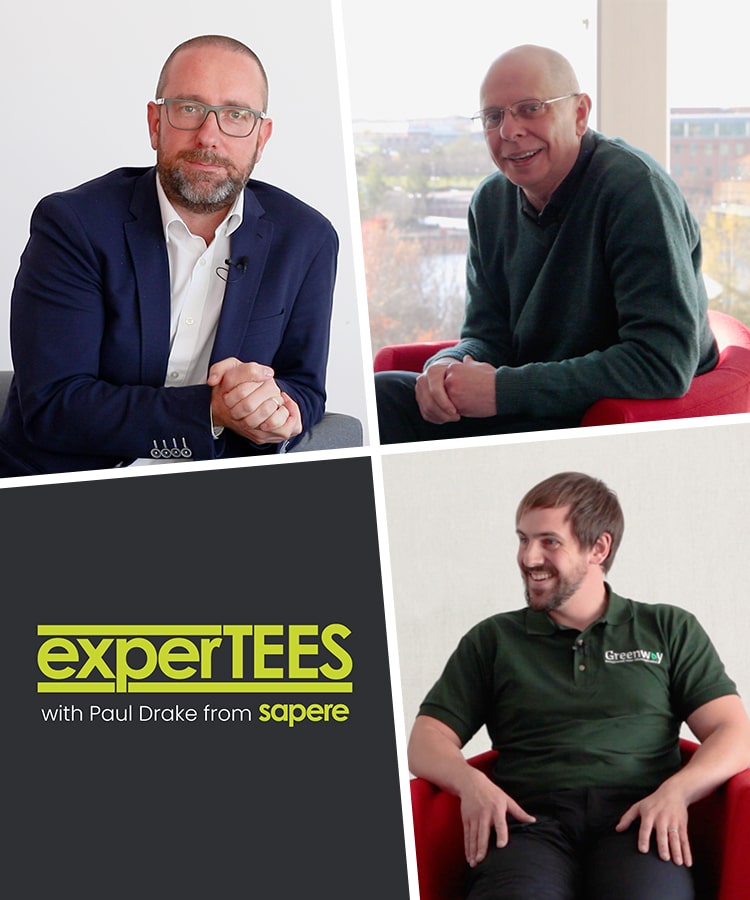
In 1991, the world wide web as we know it was created by computer scientist Tim Berners-Lee.
Since then, it has revolutionised the way we interact with each other, bringing us closer together in many ways, but further apart in others.
And now, we’re seeing another revolution with the dawning of the Internet of Things (IoT 4.0); connecting devices with devices.
Most people will be familiar with this through connected tech such as FitBits, Alexas and Teslas – in short, any device that is sold to us as being smart.
The International Data Corporation estimates there will be 41.6 billion connected IoT devices by 2025, mostly made up of autonomous cars, smart homes, wearable devices and the mobile phone.
We’re already surrounded by wearable tech and smartphones, but what impact is this data-driven technology having on us – and what does it mean for the future?
As Dr Simon Johnson of CPI told us at our latest ExperTEES session: “Tim Berners-Lee couldn’t have conceived of all the things that we now do. The scope and the breadth of what the internet can do is just ridiculous.”
Essentially, the IoT means that technology can now process information without human input. As tech pioneer Kevin Ashton describes it: “What the Internet of Things is really about is information technology that can gather its own information. Often what it does with that information is not tell a human being something, it just does something.”
Take the Amazon Alexa. Users can instruct this small, innocuous-looking device to complete any number of tasks, from playing music via a smartphone to ordering an Uber – all without a real person using anything other than their voice.
At Sapere, we have been using the IoT for years, even before we were necessarily calling it that, having developed solutions for many firms, including Kromek, Palintest and Traceco.
As mentioned above, the key advantage is having so much data, quickly captured and sent where you need it.
We’re currently working on a project with Greenway Pest Management, in collaboration with CPI, to improve efficiency through IoT, and as director Andrew Hancock told us at ExperTEES, the possibilities are endless.
He said: “Pest control is very analogue at the moment, with a lot of manual checking of traps, which takes a lot of our time.
“If we have a system that is autonomous, and that can use sensors to detect pests that may not be caught in traps, we therefore have more realistic data to work with and can assess the true scale of the pest problem.
“The IoT gives us a USP, but it’s not a gimmick; it’s something we can use, that makes our service more efficient and actually helps our customers.
“Normally, we’d do six-weekly site checks, and the issue with this is, we may be there one day and its clear; the next, a rodent enters the site.
“With IoT, it can tell us when the rodent was there, for how long – all while saving us manpower.
“This gives a better level of protection to the customer, they get 24/7 monitoring – all while saving the time of the technicians on the ground.”
And as Simon added: “The collaboration aspect is invaluable. We don’t produce software, so it’s great to work with companies like Sapere, who can take the devices we make and apply them to all sorts of industries – in this case, pest control – I would never have guessed we’d be working in that sort of space.”
However, such data-mining isn’t without its issues. Concerns have been raised about where the data is held, who has access to it and what it will be used for – as well as fears over the infrastructure needed to store ever-increasing amounts.
While many people see this trade-off as worth it – a hands-free service in exchange for location tracking may not seem like a big deal to today’s generation – the greater security concern may actually be down to human intervention.
The rise of the internet has been accompanied by the rise of hackers, and the next generation is no exception.
The IoT has already been shown to be vulnerable to attack; whether that’s a smart vehicle having its systems tampered with at high speed or a home security accessed, spying on an unsuspecting family, there will always be those who seek to use technology for nefarious purposes.
To combat this, the Internet of Things Security Foundation (IoTSF) was launched in 2015 with a mission to secure the IoT by promoting knowledge and best practice. Their mission? To make it safe to connect.
Security notwithstanding, the IoT is here to stay; 127 devices are added to the internet every minute and, combined with increasing developments in artificial intelligence, the possibilities are endless.
One clear benefit, thrown into focus during the Covid-19 pandemic, is the development of IoT in healthcare. In a world where the ill are ordered to isolate to halt the spread of the disease, a connected device can provide valuable, real-time results to healthcare providers.
Such tech could also enable the elderly to stay in their own homes, alerting family members to any worrying change in routine and prompting intervention.
The above just goes to show that, while the fear of the new is very real – and there are definitely issues that need addressing around privacy and security – such innovations have the power to be a real force for good.
After all, knowledge is power – and the IoT has the world’s data at its fingertips.
If you’d like to talk to us about harnessing the power of data, call us on 01642 955645 or email sales@sapere.co.uk